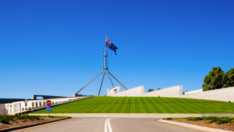Political spend dominates Q1 2022 digital advertising as industry grows 19.2% year on year
The local Australian online advertising market has continued to grow, reaching $3.449bn for the quarter ending 31st March 2022 – an increase of 19.2% on the same period in 2021 according to data from the IAB Australia Online Advertising Expenditure Report (OAER) prepared by PwC.
Within the quarter, the most significant shift in spending was unsurprisingly around the Federal election, resulting in Government being elevated to the number one advertiser category, representing 13.5% share of the general display market for the quarter, up from 3.9% in Q1 2021. By contrast, retail experienced the largest decrease in share, dropping from 16.4% to 13.5% share of general display advertising.


